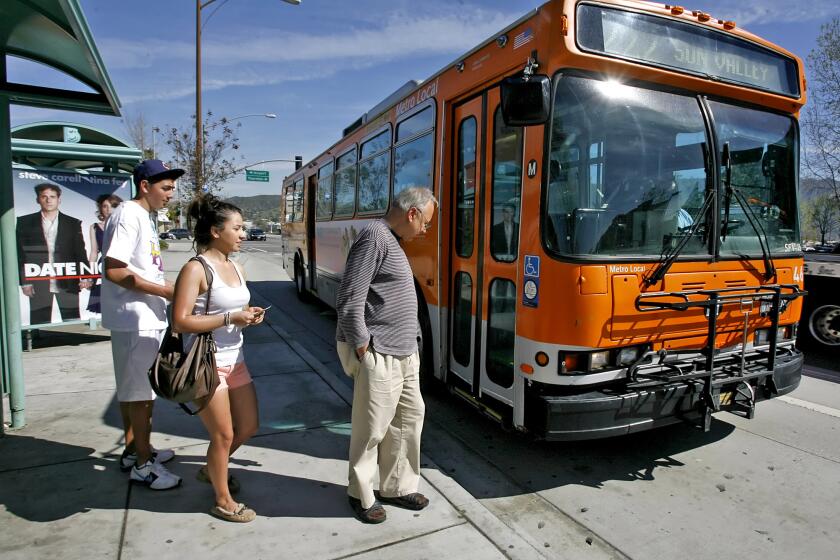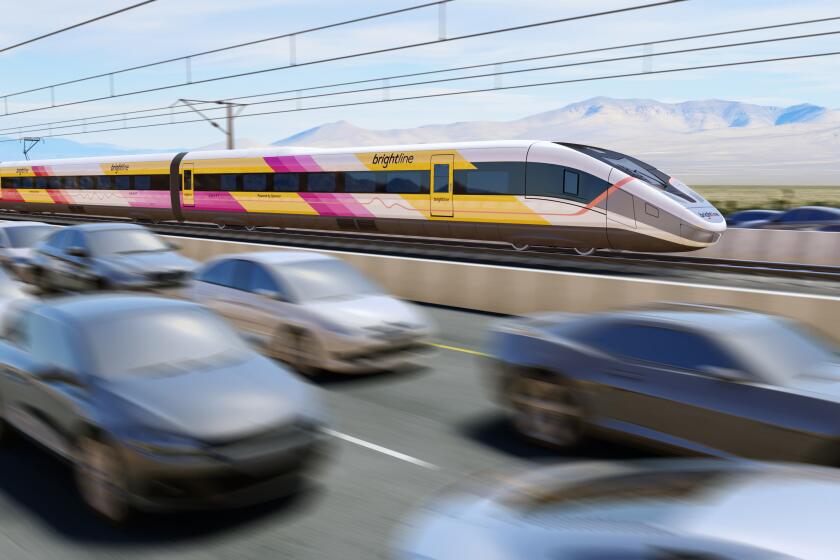Seeks to Get 300 City Workers Out of Cars : Traffic Reduction Plan Approved
Glendale City Council members this week adopted a wide-ranging plan that they hope will persuade hundreds of city employees to get out of the driver’s seat and either walk, ride or pedal to work.
The plan is among the first batch of proposals submitted by more than 200 of the Southland’s largest employers--including governments and businesses--under a state mandate to reduce air pollution.
But Glendale officials said they hope their plan, which includes pay incentives for employees who use it, will serve as a model for businesses in the city’s drive to curb rapidly increasing congestion downtown and on freeways.
“The city has to take a lead in this,” said George Miller, public works director. “It is a part of our overall transportation plan.”
Smog Legislation
State legislation signed into law in October, 1987, gave the South Coast Air Quality Management District authority to regulate employers in the district’s war on smog.
The district ultimately will require about 8,000 employers in four counties--Los Angeles, Orange and parts of Riverside and San Bernardino--to submit plans for reducing traffic, such as shorter workweeks, and to encourage employees to use transportation other than their cars.
District officials hope that if all businesses work together, traffic can be reduced by 25% during the critical commuting hours from 6 to 10 a.m.
The district has ordered employers to prepare plans that will increase average ridership among employees from the current 1.13 people per vehicle to 1.5 passengers per vehicle, said Jacqueline Switzer, a district spokeswoman.
The new law affects all businesses that have 100 or more employees at a single site. The largest businesses--those with 500 or more workers--are the first affected by the mandate. The city of Glendale, with a payroll of 1,400, is one of 13 Glendale employers ordered to submit plans encouraging ride-sharing this year.
The Glendale plan, unanimously approved by the council Tuesday, calls for incentives to persuade almost 300 of the 878 city workers who drive solo to work to find other means of transportation--including on foot, by bicycle, public transit, van pools and car pools.
In a report to the council, Rosalia J. Martinez, city transportation coordinator, said Glendale has been a leader in developing alternative transportation to the personal automobile. For example, she said, the city recently took “an aggressive step” by eliminating fares altogether on the downtown Beeline shuttle service. The free rides are expected to encourage workers to use the bus rather than their personal automobiles to go to lunch or shopping.
The city also initiated staggered work hours for about 300 civic center employees more than a year ago in an effort to eliminate “rush hour” traffic jams around City Hall.
But Martinez said significant incentives will be needed to coax about one-third of the city’s workers who now commute alone to agree to use alternative transportation. As a result, the council Tuesday allocated $262,000 to pay administrative and incentive costs for the first year of the traffic reduction program.
Incentives will include “pay bonuses” for those workers who agree to ride-share, discount fares for commuters using public transportation and preferred parking locations for van and car- pool drivers. Other alternatives being considered include permitting commuter vehicle drivers to fill their gas tanks at the city’s volume-priced pumps.
Miller said the city plans to instigate a “guaranteed ride home” policy in which the city would pay the taxi fare or provide transportation in a city-owned vehicle for commuters who miss their usual ride because they have to work late or are called away in an emergency.
Air quality district officials said it is too early to analyze the various plans that are now being submitted but some appear to be remarkably innovative.
One Orange County hospital is issuing special buttons to employees who agree to ride-share. The buttons allow workers to use an express check-out line in the hospital cafeteria--a sort of “car-pool lane” that has become instantly popular, Switzer said.
“That kind of innovative thinking is exactly what we are looking for,” Switzer said.
Glendale’s plan is under review until mid-January.
More to Read
Start your day right
Sign up for Essential California for news, features and recommendations from the L.A. Times and beyond in your inbox six days a week.
You may occasionally receive promotional content from the Los Angeles Times.






